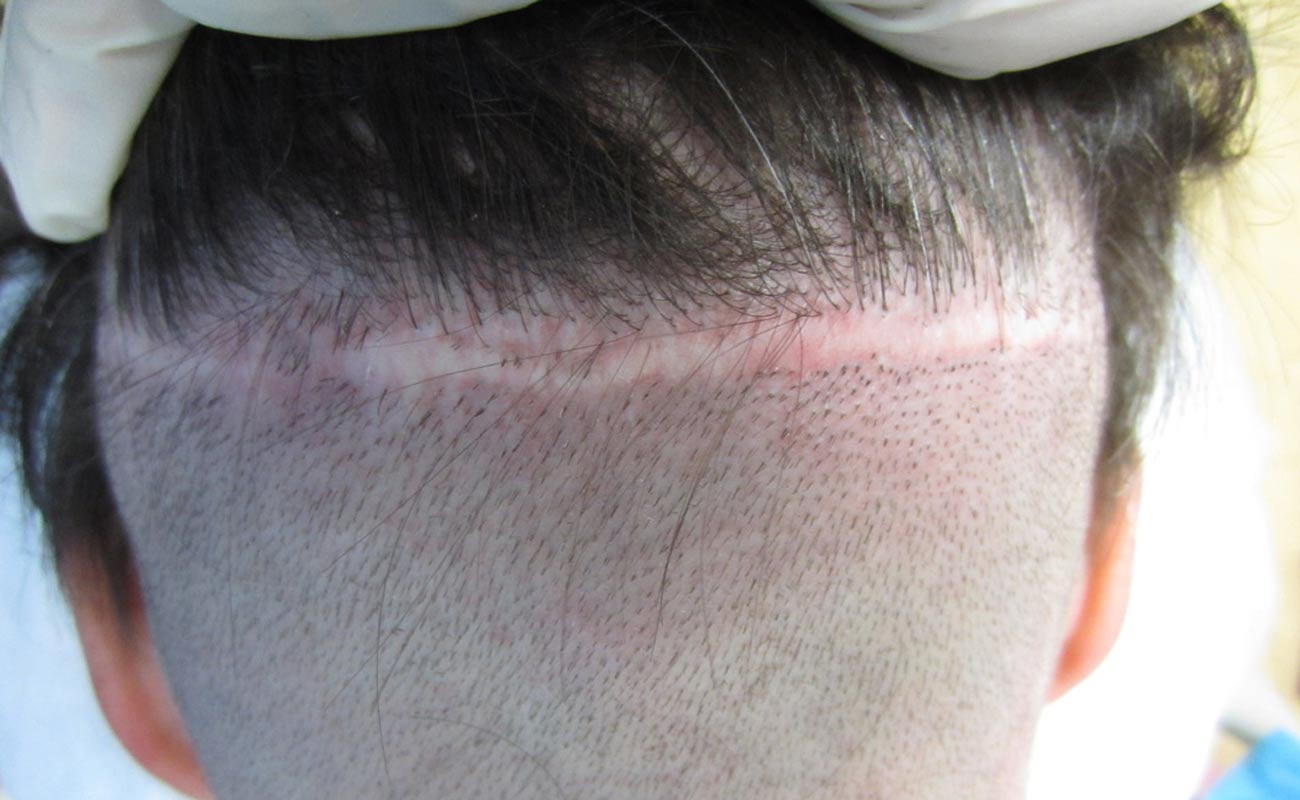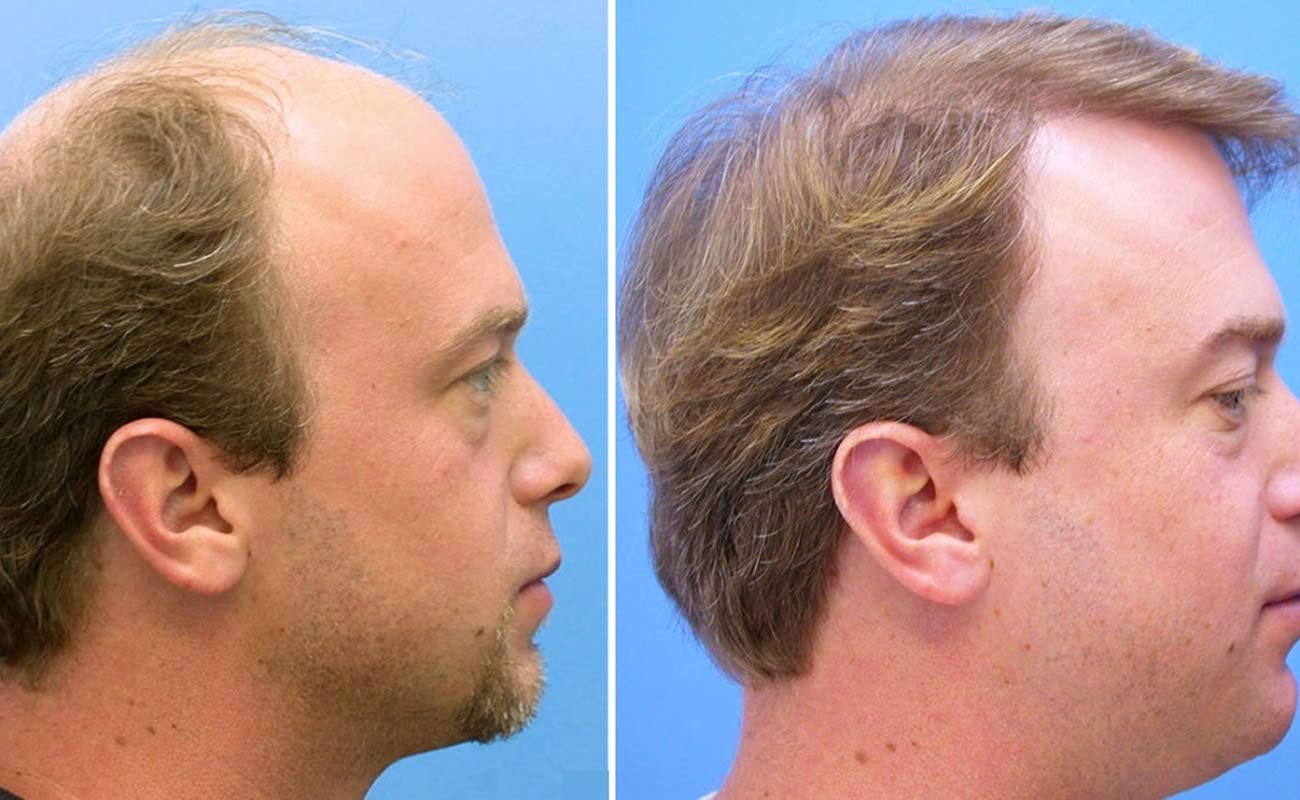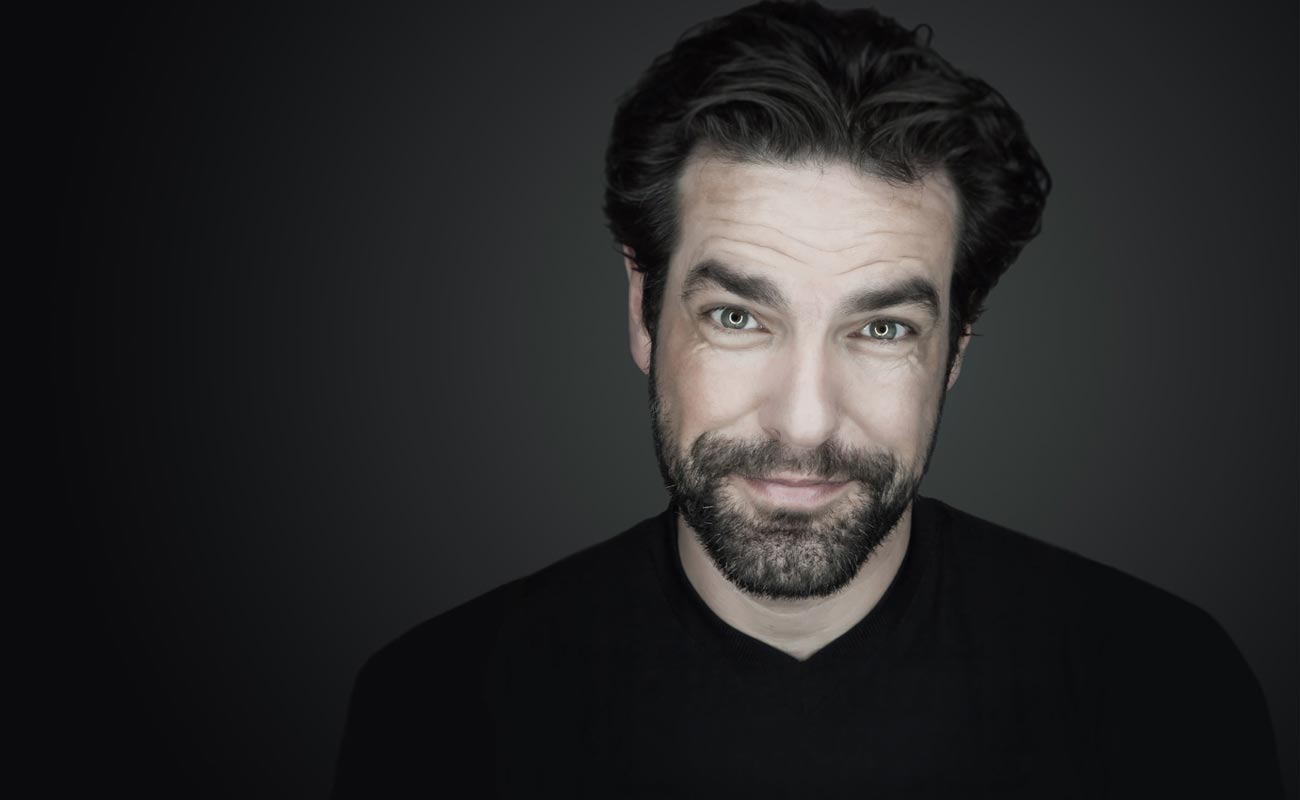Strip harvesting is the most common technique for removing hair and follicles from a donor site. The surgeon harvests a strip of skin from the posterior scalp, in an area of good hair growth. A single-, double-, or triple-bladed scalpel is used to remove strips of hair-bearing tissue from the donor site. Each incision is planned so that intact hair follicles are removed. The excised strip is about 1–1.5 x 15–30 cm in size. While closing the resulting wound, assistants begin to dissect individual follicular unit grafts, which are small, naturally formed groupings of hair follicles, from the strip. Working with binocular Stereo-microscopes, they carefully remove excess fibrous and fatty tissue while trying to avoid damage to the follicular cells that will be used for grafting. The latest method of closure is called 'Trichophytic closure' which results in much finer scars at the donor area.

The surgeon then uses very small micro blades or fine needles to puncture the sites for receiving the grafts, placing them in a predetermined density and pattern, and angling the wounds in a consistent fashion to promote a realistic hair pattern. The technicians generally do the final part of the procedure, inserting the individual grafts in place.
Strip harvesting will leave a thin linear scar in the donor area, which is typically covered by a patient's hair even at relatively short lengths. The recovery period is around 2 weeks and will require the stitches/staples to be removed by medical personnel or sub cuticular suturing can be done.
Strip harvesting produces a linear scar. The appearance of the donor strip scar can be a significant concern for patients who wish to wear their hair very short. The vast majority of patients who undergo strip harvesting have minimal scars that are easily concealed by the hair above the scar. And in many instances the scar may not be evident at all except on careful inspection. There are, however, some patients who have scars that have widened, and there are also patients who have several scars from multiple procedures. In some instances the apparent widened appearance of a scar may actually be due to damage to follicles along the incision line during harvesting rather than true scarring.

Judicious planning on the part of the surgeon can largely diminish the problems associated with strip scars. By limiting the width of the strip to be taken and avoiding tension on the wound, the surgeon can minimize the donor scar. To avoid multiple scars many physicians who use strip harvesting employ a single scar technique even if multiple procedures are performed. By utilizing careful dissection along the incision line, damage to hair follicles can be diminished.
The use of the trichophytic method of closure for strip harvesting can also be extremely helpful in improving the appearance of the strip harvest scar. As noted above closing under minimal or no tension can help to avoid the widening of a scar. This allows hair to camouflage the scar and the hair growing through the scar can limit the stretching. Avoiding damage to the hair follicles along the incision lines is crucial in preventing the appearance of a prominent scar.
Some physicians advocate the use of a layered closure and undermining as techniques to minimize scars. Other surgeons feel that undermining and layered closures do not seem to alter the healing except in situations where tension is a problem.
There are patients such as those with Ehlers Danlos syndrome, who because of alterations in collagen deposition, are prone to widened scars and poor wound healing. There is little that can be done to prevent such scars in these patients. The circular scars produced by FUE may suffer the same fate and be stretched in these patients.
The primary rationale for the use of FUE is that a linear scar is avoided. Several proponents of FUE market the procedure as a technique that does not involve cutting, is less invasive and does not result in scars (i.e., “scarless”). While a linear scar is not created with FUE, circular scars are created. The length of incision is greater with FUE than with strip harvesting. This is apparent when one calculates the circumference of a 1mm punch (1mm x pi = 3.14) and then multiplies this by the number of grafts, for instance, 1000 grafts (1000x3.14 =3140mm which equals 314cm). In comparison, a strip harvest of 1000 grafts assuming an average density of 80 FUs per sq cm and a 1cm strip width the length of the scar created would be 12.5cm (1000/80 = 12.5).
"Cutting" is clearly involved when using a punch. Although a linear scar is not produced with FUE, scars are created and evidenced by virtue of the fact that hypopigmented or hyperpigmented "dots" may be visible when the hair is cut very short. These “dots” may be a scar reaction or actual post inflammatory pigment changes, particularly in darker skinned individuals. Also the human eye may pick up “spaces” where follicular units are missing in the normal pattern.
The depth of the incisions with FUE is usually shallower as compared to strip harvesting. The punch depth is to the level of the fat or at the fat-dermis junction. With strip harvesting the depth of incision is into the fat. Some physicians cut to the deeper fat or just above the fascia.
When using FUE it is important to recognize that as more and more grafts are harvested the area may appear moth eaten. If grafts are taken too close together there may be an appearance of a scar. In some patients as large numbers of grafts are removed there can be a clear demarcation between the areas that have been harvested and areas left alone. This is opposed to the strip technique where hair of similar density is brought back together at the suture line. Opponents of strip harvesting would note that if hair does not grow well in a strip scar and the scar widens, then the scar might be apparent if the hair above it is short or otherwise thin.
Some promoters of FUE have stated that nerves and veins are not cut. This claim is untrue. By entering the skin with the punch arteries, veins and nerves are cut. It is important to point out that with FUE the patient’s hair usually must be trimmed quite short for harvesting. This is the case especially when large numbers of grafts are required. A way to avoid trimming all of the donor hair is to set up rows of short hair between rows of long hair. The short hair grafts can be harvested within the existing long hair. But again, this is only suitable when relatively small numbers of grafts are needed.
Debate exists as to the rate of survival regarding FUE versus strip grafts. There is some concern that because the FUE grafts may have very little tissue surrounding them that they are less likely to survive. Such grafts are more prone to dehydration, which has been shown to be a major cause of diminished graft survival. The lack of perifollicular tissue is often a result of “pulling” on the graft to remove it. Because there is added manipulation in trying to remove a graft this may also contribute to diminished survival. Sometimes the ends of the bulbs are splayed or unusually far apart. This makes the bulbs more susceptible to trauma, as a result of increased graft manipulation during implantation. As of this time there are not adequate studies to compare survival rates. Clearly there are patients who have undergone the FUE procedure and have excellent results. Some physicians might argue that less successful results may be due to technical surgical skill rather than the nature of the more fragile graft created with FUE.
With FUE there is a greater chance of transection of hairs as compared to strip harvesting and this could result in poor growth or lack of growth depending on the level of transection. The rates of transection seem to vary widely with FUE. Conversely, with strip harvesting, grafts may be damaged in making the initial skin incisions and subsequent dissection of the tissue, but this is considered minimal. The use of the microscope for dissection of the donor strip should limit transection rates to 1-2%. Grafts created with strip harvesting generally have a greater amount of surrounding tissue and fat. This may decrease the chance of dehydration and allow for greater leeway in manipulation of the grafts during placing and hence, better graft survival.
When manual placement of grafts is utilized there is no difference in regard to the technique of placement of strip harvested or FUE harvested grafts. There may be some concern about the fragility of the FUE grafts and the fact that they may be more susceptible to drying and over manipulation.
When a machine that uses pneumatic pressure is used it is the contention of the manufacturer/distributor that the machine places the graft with less manipulation. Some surgeons who have used the machine have indicated that the graft placing capability of the machine is limited at times and not always reliable.
Perfectly harvested grafts may be damaged during the placement phase and fail to grow. Trauma and graft drying are well known factors that may occur in inexperienced hands and will effect graft survival. Regardless of how grafts are harvested, there is a considerable amount of artistry and technical expertise necessary to place them to produce an excellent or even acceptable result. The surgeon must be able to create an aesthetic "blueprint" for graft placement, determining the distribution of 1, 2, and 3 hair grafts. Hairline design is obviously important, as is the grafting plan over the rest of the scalp. The experienced hair surgeon will create gradients of density to achieve natural looking results with adequate density. In addition, the incisions must be made at the proper angle and direction. Even single hair grafts will look unnatural if placed at the wrong angle.
A somewhat different skill set is required for FUE harvesting. The surgeon must be able to align the small punch correctly, find the right depth and adjust the punch to account for changes in direction of the hair. The primary concern with FUE is the rate of transection. That is, if the hairs in a follicular unit are transected they are less likely to grow. This is in part dependent on the level of transection. The reports from physicians performing FUE indicate that the rate of transection is higher than with strip harvesting.

As noted above, the physician must be able to adjust the punch to account for change in hair direction. Patients with curly or very wavy hair may be difficult to treat when FUE is used. In comparison, strip harvesting is suitable for all types of hair. The use of the blunt punch can be helpful in harvesting curly or wavy hair with the FUE technique.
FUE can be a tedious process and both patient and physician may experience fatigue. This can limit the amount of grafts that can be harvested in a single session. Because of the time usually involved in harvesting and the possible strain on the surgeon performing the harvesting one has to wonder if less emphasis is placed on the recipient area.
The learning curve for FUE can be slow for physicians who are used to excisions with scalpels and unaccustomed to the use of punches for harvesting. The physician may need to use high power loupes 4x-6x. Working at a shorter focal distance can be tiresome and lead to neck problems. Some physicians have used ophthalmic microscopes to facilitate the surgery.
An important issue associated with a particular mechanized FUE is the marketing to physicians that unlicensed personnel may be able to perform the harvesting. This raises significant legal issues in many countries, including the U.S. There are states where it is clearly illegal to have a non-physician, non Physician Assistant (PA) or Nurse Practioner (NP) perform such surgery. The laws in other countries may present similar medico legal problems regarding who can harvest tissue. For example, in Austria, Israel, Italy, Korea, Georgia, Thailand, Turkey, and Japan, only physicians are allowed to make incisions, and regulations vary as to the role of assistants in graft insertions. In some countries including the US, entrepreneurial nurses and medical assistants are setting up hair transplant clinics, and hiring physicians as medical directors who may have limited or no hair transplant experience, but who “supervise” the procedure. Many U.S. states allow the physician to delegate responsibilities to staff under supervision, but both the degree of supervision, and the extent of staff responsibilities is not clearly defined.
To date, this issue has not been challenged or reviewed by any state medical board.
The following is the position of the International Society of Hair Restoration Surgery:
The position of the International Society of Hair Restoration Surgery is that any procedure that involves tissue removal from the scalp or body, by any means, must be performed by a licensed physician in the field of medicine. Physicians who perform hair restoration surgery must possess the education, training, and current competency in the field of hair restoration surgery. It is beyond the scope of practice for non-licensed personnel to perform surgery. Surgical removal of tissue by non-licensed medical personnel may be considered practicing medicine without a license by state, federal or local governing boards of medicine. The Society supports the scope of practice of medicine as defined by a physician's state, country or local legally governing board of medicine.
In general most physicians who perform FUE are not able to do as many grafts in a single session as can be done with strip harvesting. With strip harvesting, sessions of 2000-3000 grafts are very common and some physicians frequently perform sessions in excess of 4000 grafts. There are, however, exceptions and some physicians, routinely performing motorized FUE, report similar in excess of 2000 grafts. Unfortunately, the rates of graft transection in these larger FUE sessions has not been studied or reported.
The cost of FUE is usually significantly more than that for strip harvesting on a per graft basis. The costs may exceed double the price of strip harvesting. n
FUE can be very useful for harvesting body hair. In such situations the majority of follicular units are single hairs. Evidence of the surgery is often visible as hypo or hyperpigmented “dots” in these non-scalp donor areas.
When small numbers of grafts are needed FUE may be an excellent choice of technique. Using the technique where narrow rows of trimmed hair are used it would be relatively easy to camouflage the work and avoid creating a linear scar. On the other hand using a 2.5 cm long and 1.2 cm wide strip a surgeon could easily obtain 240 or so grafts. (2.5 x 1.2 =3.0 sq cm) assuming a density of 80 FU per sq cm (80 x 3 = 240 grafts). Thus, evidence of removal of 240 FUE grafts would be a 2.5cm long scar.
FUE can be used to try to camouflage linear donor scars. This is considered by many hair restoration surgeons to be another excellent use of the technique. Some surgeons have suggested that a combination of strip harvesting and FUE is the optimal use of the techniques.
The cost of instrumentation for strip harvesting and non-mechanized FUE is modest. With the advent of mechanization the cost for machines that can be used for FUE can be expensive. Powered or motorized devices can cost several thousand dollars and one system currently sells for approximately $80,000 (USD).
With the motorized systems there is debate as to the rate of transection. Some physicians who perform FUE but do not use the motorized systems feel that the rate of transection is higher with such devices. Other surgeons indicate that transection rates are the same or lower. This may depend on the training and skill of the physician performing the work.

Key Strength of Strip harvesting
Sources
Reese, R. A single-blinded, randomized controlled study of the use of autologous platelet rich plasma (PRP) as a medium to reduce scalp hair transplant adverse effects. Hair Transplant Forum International, March/April 2008, 51-52
Uebel, C. A new advance in baldness surgery using platelet-derived growth factor. Hair Transplant Forum International, May/June 2005, Improvement in number of hair follicles in a PRP treated area compared to a non-treated area improved between 3 and 52% (avg 15%).
miamihair.com, ishrs.org, en.wikipedia.org/wiki/Hair_transplantation
Submit Comment